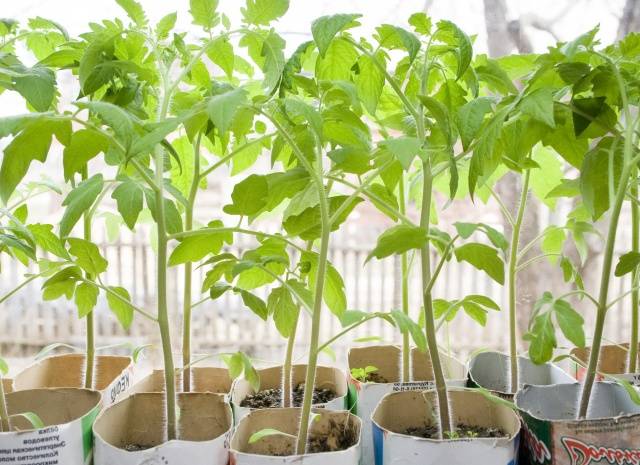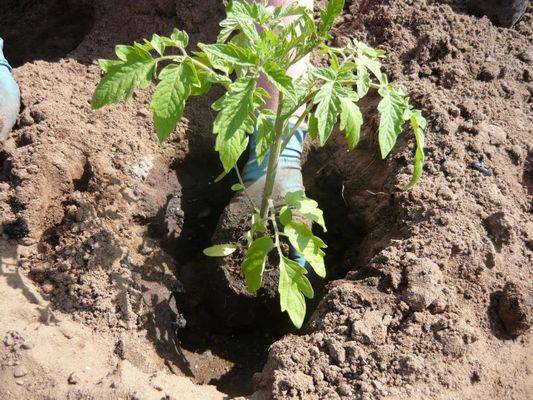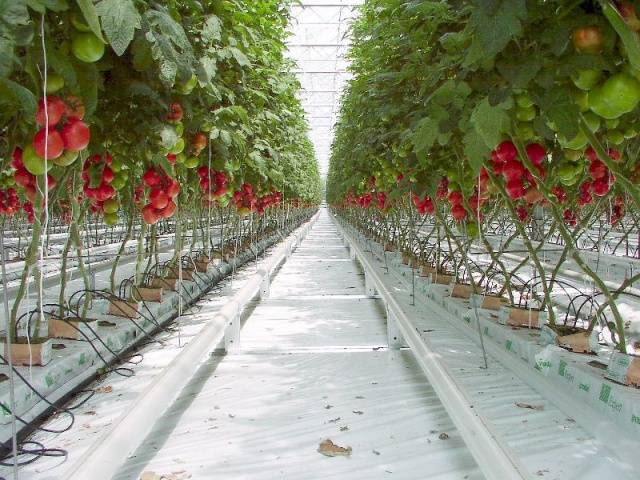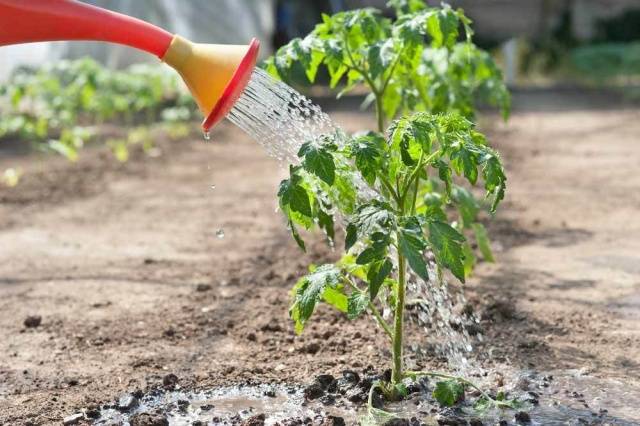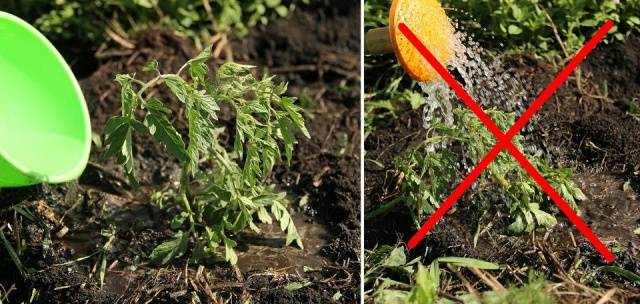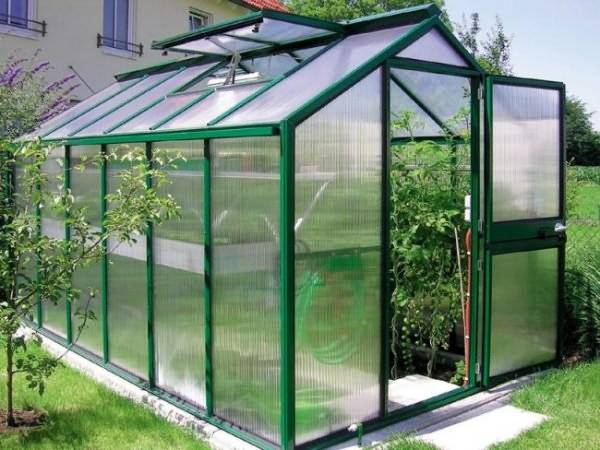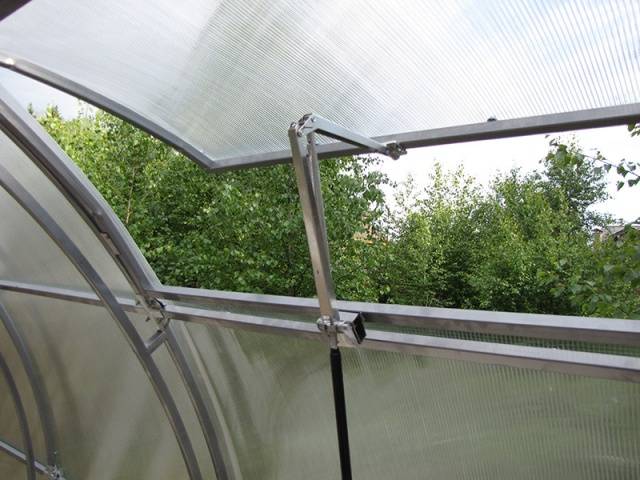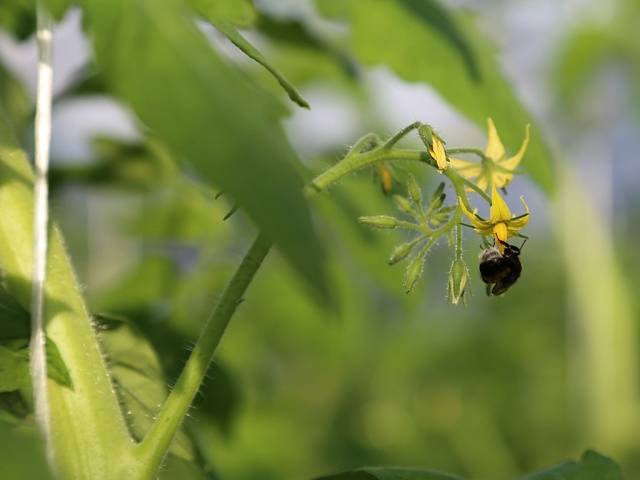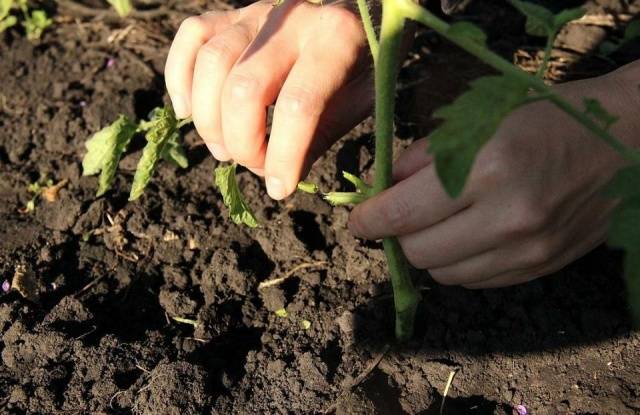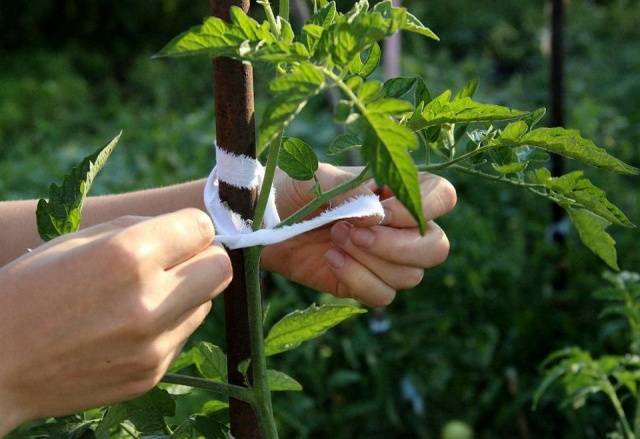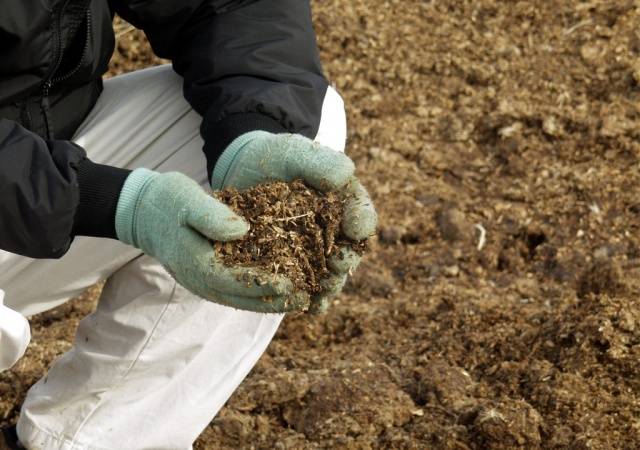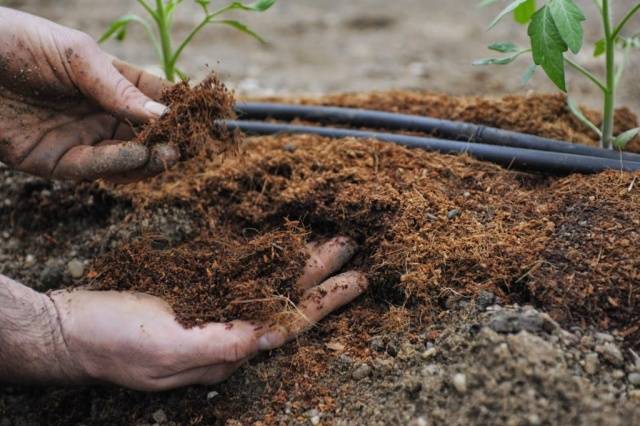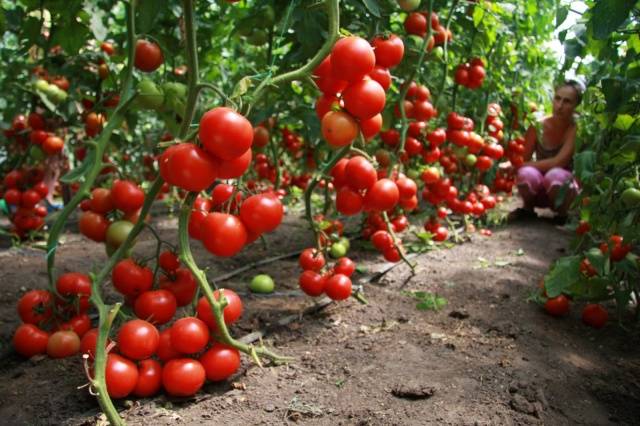Content
It is not so easy to grow tomatoes in an ordinary summer cottage - this culture is too capricious and very thermophilic. The best results in tomato cultivation are achieved by gardeners who have greenhouses and hotbeds at their disposal - here tomatoes feel much more comfortable than in the open field. But greenhouse tomato cultivation also has a lot of features and rules, non-observance of which leads to the death of plants and a decrease in yield.
This article will be about how to plant tomatoes, and how to provide competent care for tomatoes after planting in a greenhouse.
Planting a tomato in a greenhouse
There are no fundamental differences in the fact how to plant tomatoes in a greenhouse or in open ground. The main thing at the initial stage is to choose or grow healthy and strong seedlings that can grow into a full-fledged bush and give a good harvest.
Signs of a good tomato seedling
High-quality tomato seedlings must meet a number of criteria:
- Have sufficient height - plants normally reach 25-30 cm, suitable for planting in a greenhouse and strong bushes about 20 cm high.
- Differ in bright green leaves, elastic plump stems, do not be lethargic and do not look painful.
- By the time the tomato is planted in the greenhouse, the seedlings should have at least 7-8 fully formed leaves.
- It is good if the first ovary has already formed on the plants, but the buds should not open yet.
- Tomato roots should not be damaged or show signs of decay. The seedlings will perfectly take root in the greenhouse, the roots of which firmly entangle the lump of the substrate.
Many farmers buy ready-made tomato seedlings, but you can grow them yourself - it's not too difficult, but you can be sure of the quality of the planting material and in the tomato variety.
How to plant tomatoes in a greenhouse
Due to the peculiarities of the Russian climate in this region, only one way of growing tomatoes is possible - through seedlings. In a greenhouse, plants are more protected from weather surprises and other external factors, and in Siberia, for example, only in protected ground can a really good harvest of heat-loving crops be grown.
Tomato greenhouses can be any: film, polycarbonate or glass. From material greenhouse only the timing of transplanting seedlings will depend. For example, a greenhouse made of polycarbonate or glass will warm up faster than a film greenhouse, so seedlings can be planted here earlier.
But the earliest dates for planting tomatoes in heated greenhouses - here vegetables can be grown even all year round, providing them with the necessary temperature, humidity and lighting.
The stages of planting tomato seedlings in a greenhouse are as follows:
- First you need to prepare the ground for the tomato. This should be done in the fall or after harvesting the last crop (if the greenhouse is heated). In any case, the land must rest for at least 30 days. If the previous plantings hurt, the topsoil will have to be removed and replaced with a new one. When the soil in the greenhouse is already too depleted, it is completely replaced.The earth should be dug up, adding organic matter to it, and just before planting a tomato, when preparing holes for seedlings, you also need to add mineral fertilizers - tomatoes love nutritious soils. The same land is perfect for cucumbers, their planting is often combined with tomatoes in the same greenhouse. It is good if greenhouse crops were planted in the greenhouse before growing vegetables, these crops contribute to the saturation of the soil with the necessary components and loosen it.
- Immediately before planting tomatoes, you need to make beds, the depth of the grooves should be about 10-15 cm, and distance between them depends on the variety of tomato. The soil in the beds must be watered with a disinfecting compound, like copper sulfate or potassium permanganate.
- Tomato seedlings must be transferred to the greenhouse along with an earthen clod, so they do it carefully, trying not to damage the roots and not shake the entire substrate.
- Before planting a tomato, water at room temperature is poured into each hole, they try to plant the seedlings until the water is completely absorbed into the soil - this will allow the roots to completely straighten out, so there will not be voids between the roots of the tomatoes.
- You need to deepen the tomatoes into the ground in cotyledonous leaves. But, if the seedlings are too elongated, it can be deepened more, it is best to tilt the plants at an angle of 45 degrees.
The planting of tomato seedlings in the greenhouse is over, now all that remains is to properly care for the plants in order to get a rich harvest.
The planting pattern for different varieties of tomatoes may differ due to their different heights and branching, as follows:
- indeterminate varieties of tomatoes, which can reach a height of two meters, are recommended to be grown in one stem, and the distance between tomato bushes should be left within 70-80 cm. Between rows there should be about 60-70 cm of soil freely.
- Determinant tomato varieties, as a rule, have compact bushes and do not grow more than 70 cm upward. For normal development, such tomatoes need 30-40 cm between bushes and 40-50 cm between rows.
How to care for tomatoes after planting in a greenhouse
Tomatoes differ significantly from cucumbers and other garden crops - these vegetables need to be carefully looked after, without timely and proper care, tomatoes simply die.
Such capriciousness of the tomato is primarily associated with the thermophilicity of the culture, because initially tomatoes grew only in countries with a warm climate. Russian temperatures are not very suitable for tender tomatoes - these vegetables love constant heat. Whereas in our country fluctuations in night and daytime temperatures are very significant (in Siberia, for example, the daytime heat of 45 degrees is often replaced by a nighttime cold snap of up to 10-11 degrees).
Due to such changes, the tomato can develop serious vegetative disturbances, which will lead to shedding of leaves, the appearance of fungus or other infections, and other problems.
Therefore, the goal of caring for tomatoes in a greenhouse is to maintain temperature and humidity conditions, feeding and protection from dangerous diseases or pests.
Watering
It is necessary to water the planted tomato seedlings no earlier than 10 days after transplanting. The signal for the gardener will be the pulling out of the tomatoes - if the plants have grown, they have already acclimatized enough and they can be watered.
Earlier watering will lead to decay of the root system, which is not yet able to absorb nutrients, including water. If the weather outside is very hot and sunny, and the walls of the greenhouse are transparent, you can shade the drooping seedlings, but you should not water it ahead of time.
For watering tomatoes, settled water is used, the temperature of which should correspond to the temperature of the ground in the greenhouse - so the seedlings will not experience stress with each watering.
Water should not get on the stems and leaves of the tomato, since the risk of infection with rot or late blight is already too high in the greenhouse for these plants, and high humidity further increases the likelihood of problems. It is ideal to irrigate tomatoes with a long-nosed watering can or use a drip irrigation system.
The irrigation scheme largely depends on the temperature and humidity conditions in the greenhouse. On average, tomatoes need to be watered every 5-7 days.
At first, about 5 liters of water should fall on each square meter of the greenhouse, during the flowering period the amount of water gradually increases to 12 liters, and in extreme heat and at the stage of ripening of fruits, tomatoes already need at least 15 liters per square meter of land.
It is best to water the tomatoes in the early morning or evening when the heat subsides. If the sun's rays fall through a drop of water onto the leaves or fruits of a tomato, you will certainly burn the plant.
Airing
For tomatoes, high humidity is destructive, therefore, airing the greenhouse is an important component of high-quality care for them. Drops usually accumulate on the walls of the greenhouse - condensation that appears due to the difference in temperature inside and outside the greenhouse.
It is imperative to get rid of condensation, because it increases the level of humidity, which is why the tomatoes begin to hurt and die.
Airing the greenhouse is also necessary to regulate the temperature regime. In the greenhouse, it should not be hotter than 30 degrees, when the temperature rises, the tomatoes begin to shed flowers and ovaries, which leads to their death. At night, the temperature in the greenhouse should be at least 16 degrees, and during the day, the optimal value is 22-25 degrees.
In the springtime, the greenhouse is ventilated during the day, when it is warm enough outside. The vents need to be slightly opened several times a day for a short period of time. In summer, the greenhouse can be open at least all day, the main thing is to prevent the heat.
Normal indicators of humidity in a greenhouse with tomatoes are 68-70% - in such conditions, we can talk about sufficient watering and soil moisture.
With such an assistant, even those summer residents who visit their plots only on weekends will be able to grow tomatoes in the greenhouse.
Pollination
Modern varieties of tomatoes for greenhouses almost always belong to the group of self-pollinated plants. But even such crops need wind, a minimum of insects, or human help.
There are several ways to help tomatoes in this case:
- some bring hives with bees into a greenhouse with tomatoes, but this method is only suitable for those who have these bees. Also, this option is not suitable for small greenhouses - the hive simply will not fit there.
- You can attract insects to tomatoes with fragrant and bright flowers. Such plants are planted interspersed with cucumbers and tomatoes, or pots with flowering crops are brought in only at the stage of flowering vegetables.
- Drafts also help carry pollen from one plant to another. Tomatoes are not very afraid of drafts, so it is quite possible to open the vents on the opposite walls of the greenhouse.
- A person can also transfer pollen from tomatoes. To do this, you need a brush with natural bristles. With this tool, the stamens of one plant are first touched, then the pollen is transferred to other tomatoes.
In order for the pollination process to be possible, the pollen on the tomato flowers must be dry and crumbly, and for this it is necessary to observe the correct temperature and humidity conditions in the greenhouse.
Bush formation
The formation of a cucumber, tomato or any other bush is necessary primarily in order to increase the yield of a vegetable crop. After all, if you do not thin out the shoots, the plant will grow and all its strength will be spent on feeding the green mass and roots, while the fruits will have nothing left.
They begin to remove the shoots from the tomato a week after planting the seedlings in the greenhouse. Moreover, tall varieties, in addition to pinching, need to be tied up - for this, pegs are driven in at the stage of planting tomatoes in the ground.
Tall varieties of tomatoes, as a rule, are grown in greenhouses in one stem. To do this, you need to leave only the very first, lower process, and remove all the rest until their length reaches 7 cm.When 7-8 ovaries are formed on the bush, you need to pinch its top - now all the forces of the plant will go to ripening the fruits.
Low-growing tomatoes can be grown in two to three stems. The lower branches are left, all subsequent processes are simply removed. They leave the most powerful and strongest stepchildren.
Food
It is necessary to feed tomatoes regularly and abundantly - this culture is very fond of fertilizers. But an overabundance of feed has a bad effect on the final result - the quality and quantity of the crop. Therefore, you need to follow the measure and adhere to a certain schedule:
- The first time the tomatoes are fed 2-3 weeks after the transfer of the seedlings to the greenhouse. For this, you can use a complex fertilizer in combination with a mineral supplement. Subsequent top dressing is best done only with organic fertilizers, since tomato fruits accumulate nitrates from mineral complexes well. So, half a kilogram of mullein and a tablespoon of nitrophoska are bred in a bucket of water. With this composition, tomato bushes are watered.
- After another 10-14 days, the tomatoes can be fertilized with a solution of poultry droppings. In a bucket (10 liters), you need to dissolve the fertilizer, based on a ratio of 1:15.
- The third time the tomatoes need to be nourished at the stage of fruit ripening. To do this, use a mullein solution - a proportion of 1:10.
All fertilizers can only be applied under watered tomatoes, otherwise there is a high probability of burning the plants.
Fight disease
For a tomato, pests are not as terrible as various viruses and fungal infections. The task of the gardener is to ensure the prevention of tomatoes and to recognize the problem at an early stage, to start fighting it.
An indication that tomatoes are sick will be their appearance:
- If the plant loses leaves and flowers, it either lacks moisture or the tomato is too hot.
- Curling tomato leaves may indicate a lack of moisture. However, this is not the only reason, a more dangerous factor is infection. In this case (if watering did not help, and the leaves on the bushes remained twisted), the tomato bush must be urgently pulled out and burned so that the infection does not spread to healthy plants.
- If the summer resident sees that the tomatoes have stopped growing, develop poorly, do not form ovaries, this is a consequence of improper feeding. Depending on the agricultural technology carried out, either the tomatoes lack trace elements for proper development, or there is an excess of nitrogenous fertilizers. The situation will be corrected by adjusting the feeding schedule.
- When the fruits do not ripen, there may be too many of them on one bush, and the plant simply does not have enough strength. This is not so scary - unripe tomatoes are picked and placed in a place well-lit by the sun, here the fruits will fully ripen in a few days.
- Spots on plants and fruits may indicate a tomato infection with late blight or other fungal disease. It will not be possible to stop such a disease, but you can try to slow down its development. For this, tomato bushes are irrigated with Fitosporin solution, diluting it in water in a ratio of 1:10. Processing must be carried out every 10 days. In addition, the gardener must monitor the temperature and humidity in the greenhouse, provide the tomatoes with normal ventilation.
- Top rot manifests itself in blackening of the lower part of the fruit and damage to the leaves. Dealing with the problem is simple - you need to cut off the lower leaves that are in contact with the ground, and pollinate the whole bush with wood ash.
Every farmer knows that it is quite difficult to deal with tomato problems, it is much easier to prevent them. One of the preventive measures can be called, for example, mulching the soil between the tomatoes in the greenhouse to prevent leaves from contacting the soil, as well as to make watering less frequent.
Outcomes
Growing tomatoes is very different from growing cucumbers, for example. This is a more thermophilic and complex culture for which proper care is very important. Only by providing competent watering, feeding, humidity and temperature conditions, you can count on getting a good harvest of tomatoes.

